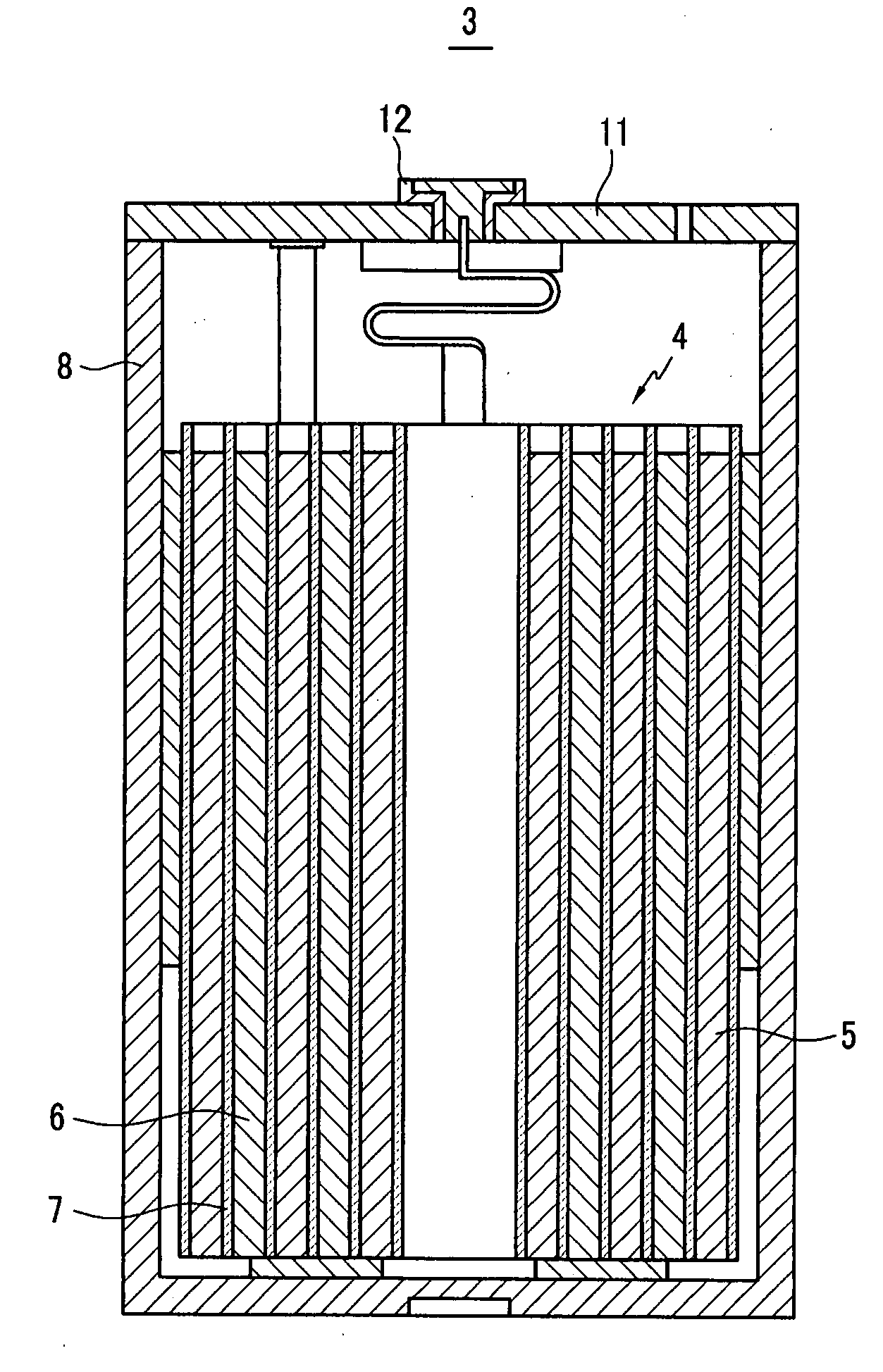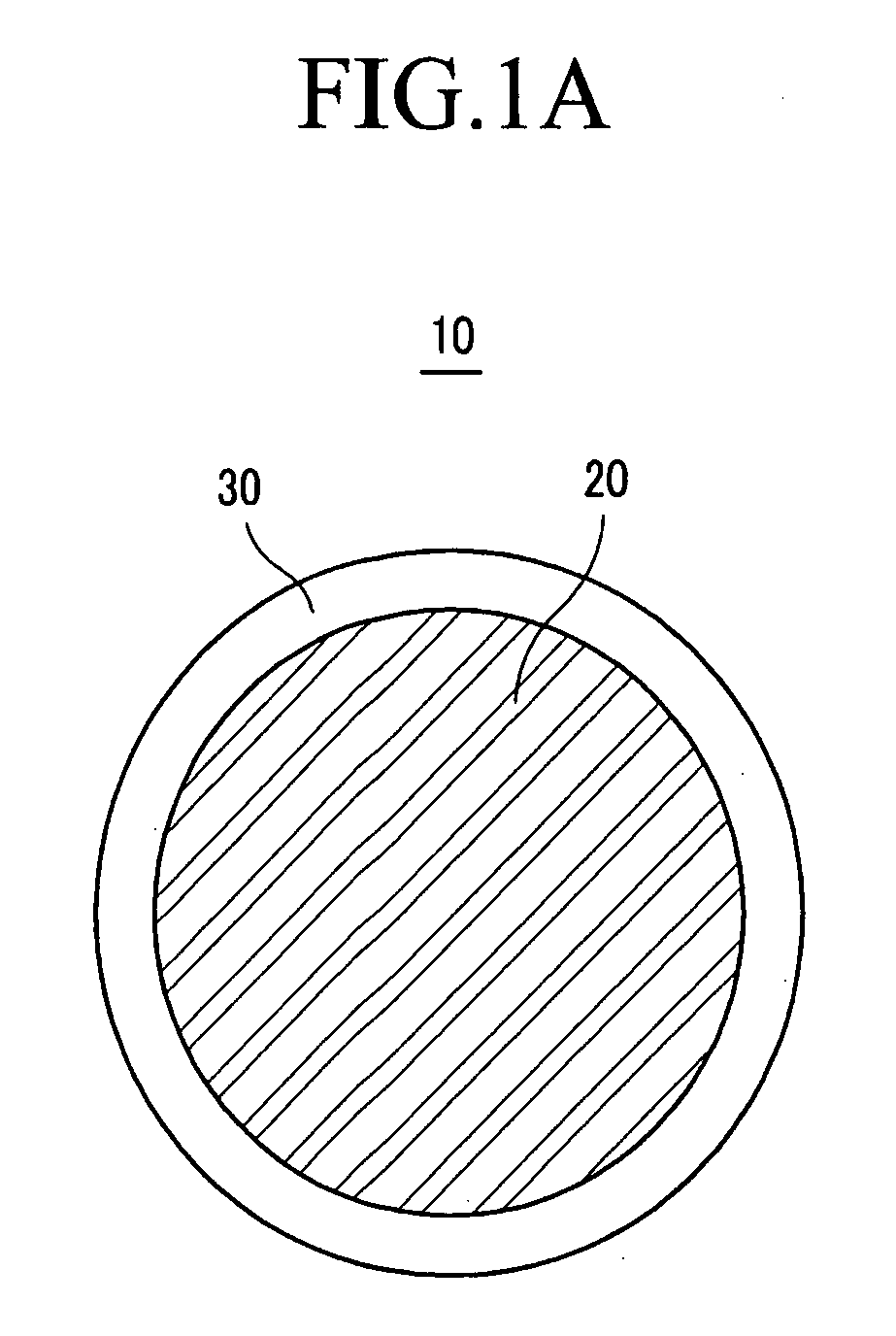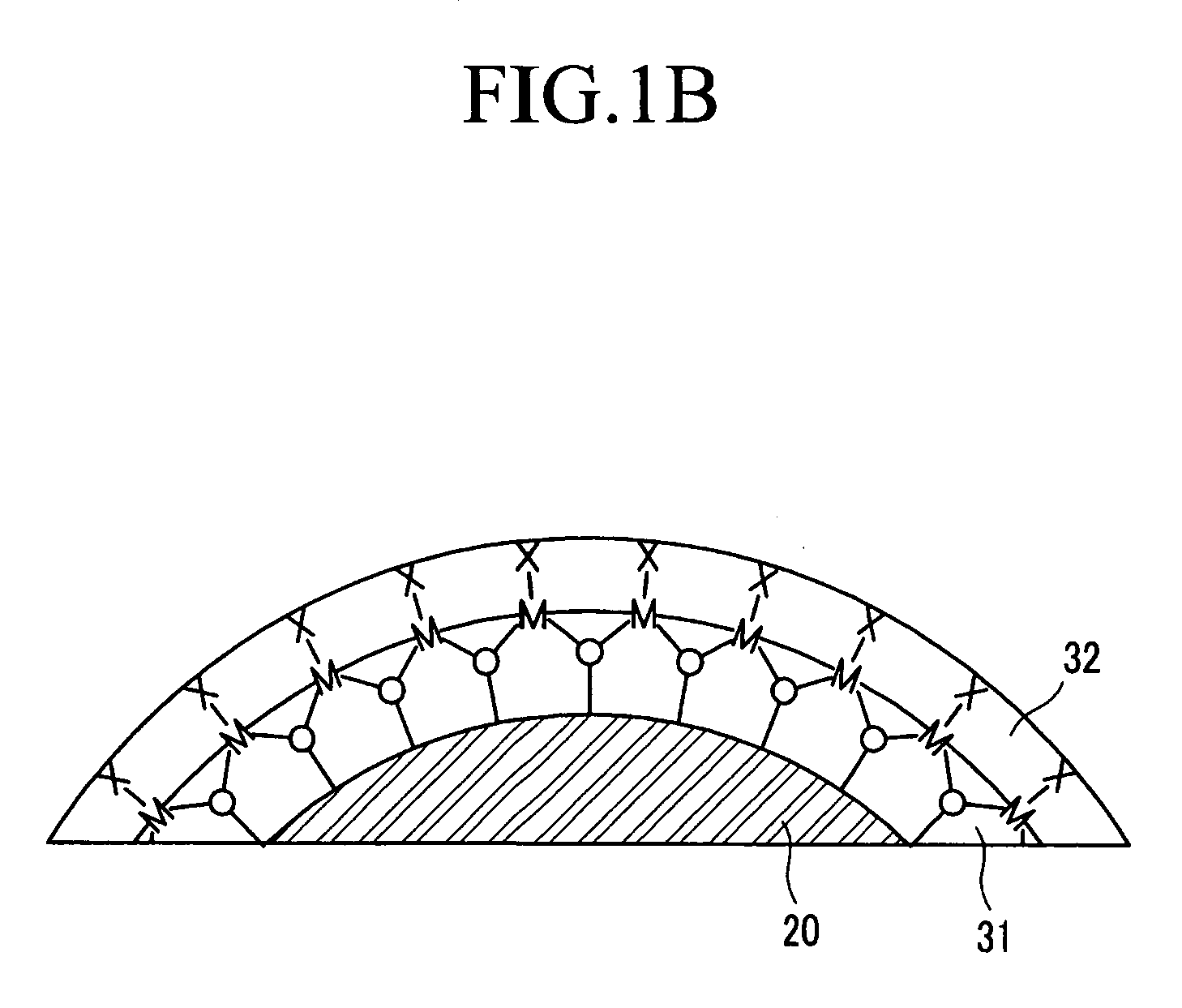Negative active material for a rechargeable lithium battery,a method of preparing the same, and a rechargeable lithium battery including the same
a rechargeable lithium battery and negative active material technology, applied in the direction of vanadium compounds, secondary cell details, cell components, etc., can solve the problems of increased manufacturing cost of lithium batteries, nmp and acetone may contaminate the natural environment, and the negative electrode of lithium metal batteries using lithium metal or a lithium alloy as its negative electrode is at risk of explosion, etc., to achieve good cycle life, improve stability, and improve the effect of high capacity
- Summary
- Abstract
- Description
- Claims
- Application Information
AI Technical Summary
Benefits of technology
Problems solved by technology
Method used
Image
Examples
example 1
[0100]1 g of silicon (10 mm) as a core material and 100 mL of ethanol were added into a reactor and uniformly dispersed. Then, 0.2 M ammonia water prepared by mixing ammonia and water in a volume ratio of 29:71 was added to the dispersion. They were then uniformly mixed to prepare a core liquid.
[0101]On the other hand, a precursor liquid was prepared by adding 10 parts by weight of a compound represented by the following Formula 2a based on 100 parts by weight of the core material to 1 mL of ethanol and 1 mL of water.
[0102]The prepared precursor liquid was rapidly added to the core liquid to perform a hydrolysis and condensation reaction.
[0103]Next, the reaction solution was heated at 60° C. to volatilize ethanol, and then heat-treated at 450° C. to prepare a negative active material including a 8 nm-thick coating layer on the surface of silicon. The coating layer included as a core Si—O— was bounded with the core material, and a p-methyl phenyl group was positioned on a Si side cha...
example 2
[0104]A negative active material was prepared to have a 12 nm-thick coating layer on the surface of the silicon according to the same method as in Example 1, except that 30 parts by weight of an organic-inorganic hybrid precursor was used based on 100 parts by weight of a core material.
example 3
[0105]A negative active material was prepared to have a 19 nm-thick coating layer on the surface of the silicon according to the same method as in Example 1, except that 50 parts by weight of an organic-inorganic hybrid precursor was used based on 100 parts by weight of a core material.
PUM
 Login to View More
Login to View More Abstract
Description
Claims
Application Information
 Login to View More
Login to View More - R&D
- Intellectual Property
- Life Sciences
- Materials
- Tech Scout
- Unparalleled Data Quality
- Higher Quality Content
- 60% Fewer Hallucinations
Browse by: Latest US Patents, China's latest patents, Technical Efficacy Thesaurus, Application Domain, Technology Topic, Popular Technical Reports.
© 2025 PatSnap. All rights reserved.Legal|Privacy policy|Modern Slavery Act Transparency Statement|Sitemap|About US| Contact US: help@patsnap.com



